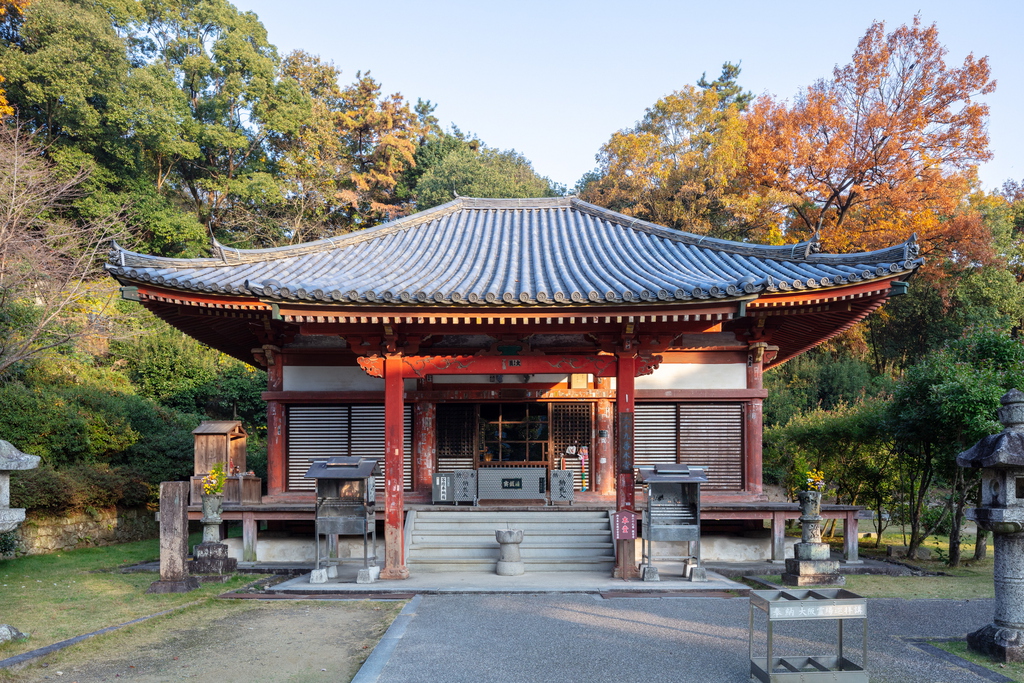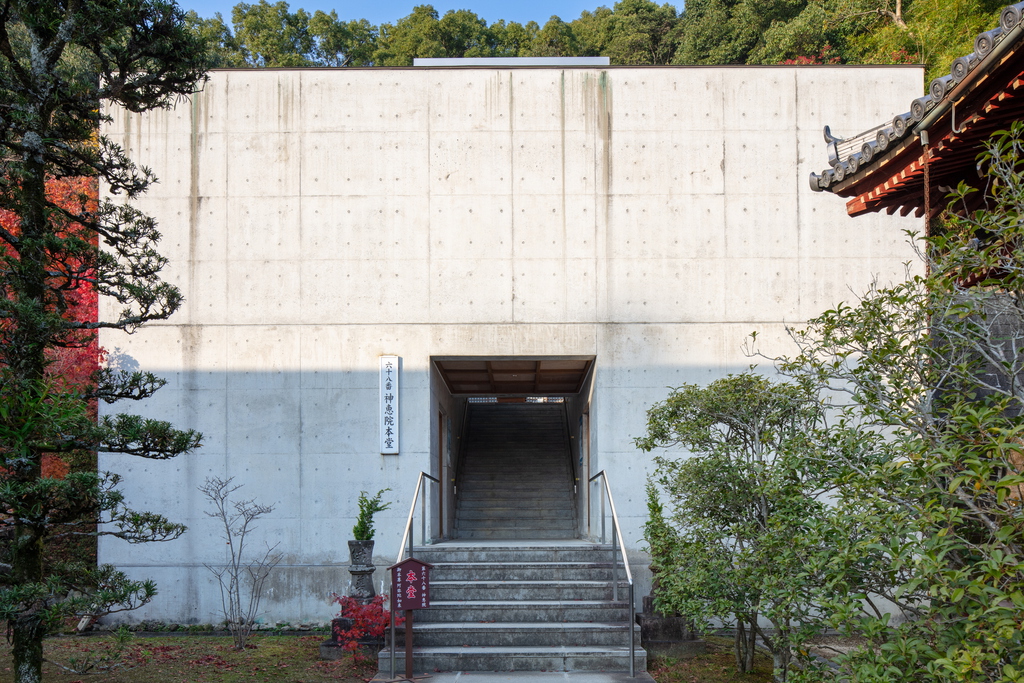
Central Kagawa(Coastside)Jinnein Temple and Kannonji Temple
Kannonji Temple Main Hall

Kannonji Temple Main Hall

Jinnein Temple Main Hall
Jinnein Temple and Kannonji Temple, the 68th and 69th temples on the Shikoku 88-Temple Pilgrimage circuit, are located just below the summit of Mt. Kotohiki in the city of Kan-onji in Kagawa Prefecture. What makes them unique is the fact that these are the only temples on the Pilgrimage circuit that are located on the same grounds. They even share the same chief priest.
Up until the Edo Period, which ended in 1868, the two temples were actually one and the same sanctuary. Historical documents from that period mention two places of worship on Mt. Kotohiki: Kotohiki Hachimangu Shrine, which was a Shinto shrine, and Kannonji Temple, which was a Buddhist temple associated with Kotohiki Hachimangu Shrine. At the time, Kotohiki Hachimangu Shrine was the 68th temple on the Shikoku 88-Temple Pilgrimage circuit, followed by Kannonji Temple.
While it may seem unusual for a Shinto shrine and a Buddhist temple to be associated, the fact is that, throughout history, the native Japanese Shinto religion and Buddhism, which was introduced to Japan in the 6th century, were always closely connected. That all changed with the arrival of a new government in the Meiji period after 1868. Japan suddenly opened up to the rest of the world after centuries of isolation, and the new government decided to draw a clear line between the two religions with the goal of unifying the nation spiritually for the new era.
This change in religious policy caused the Buddhist artifacts to be removed from Kotohiki Hachimangu Shrine and transferred to Saikondo Hall on the grounds of Kannonji Temple. Saikondo Hall then became known as the main hall of Jinnein Temple. At that time, Jinnein Temple also replaced Kotohiki Hachimangu Shrine as the 68th temple on the Shikoku 88-Temple Pilgrimage circuit. That is how the unique compound structure with both Jinnein Temple and Kannonji Temple located on the same grounds came to exist.
This particular site represents an essential part of Japanese cultural heritage, which is why the main hall of Kannonji Temple, known as Kondo Hall, has also been designated an Important Cultural Property.
Important cultural property (Kannonji Temple Main Hall)
20-minute walk from JR Kan-onji Station
(Nokyojo (Temple Stamp Office)) 7:00 a.m. to 5:00 p.m.